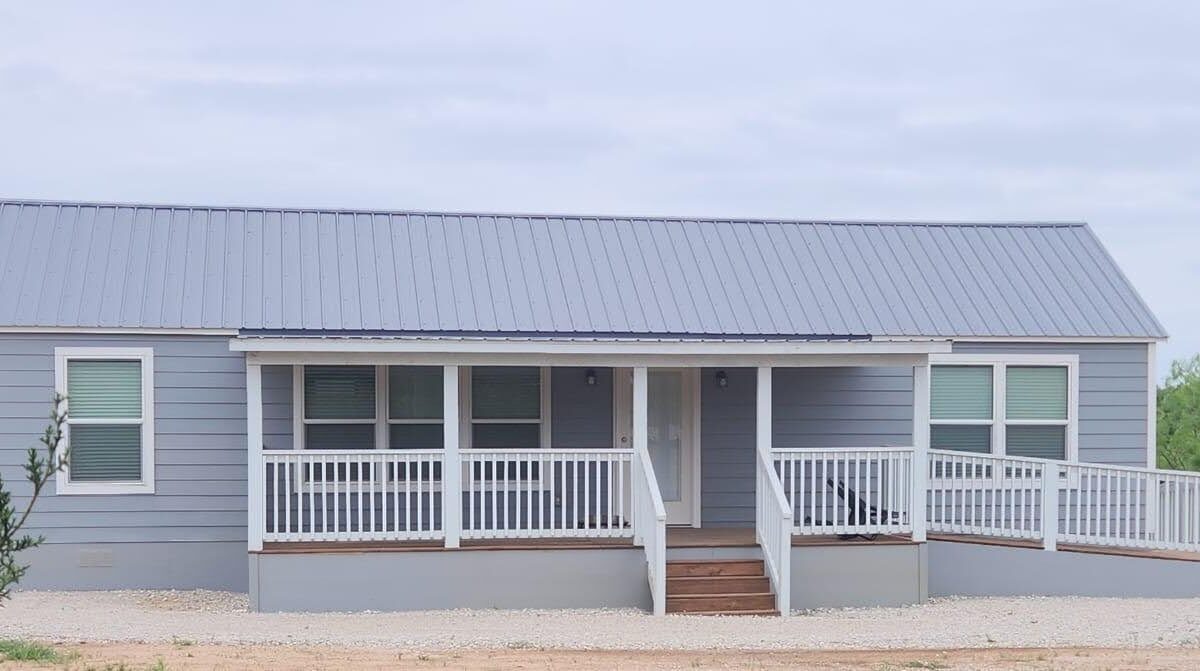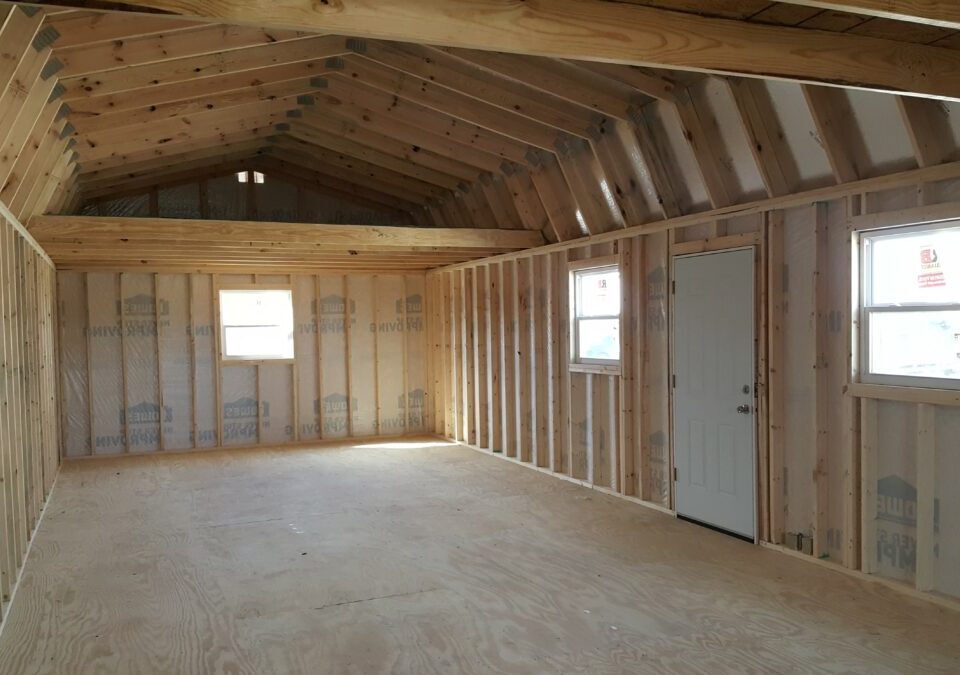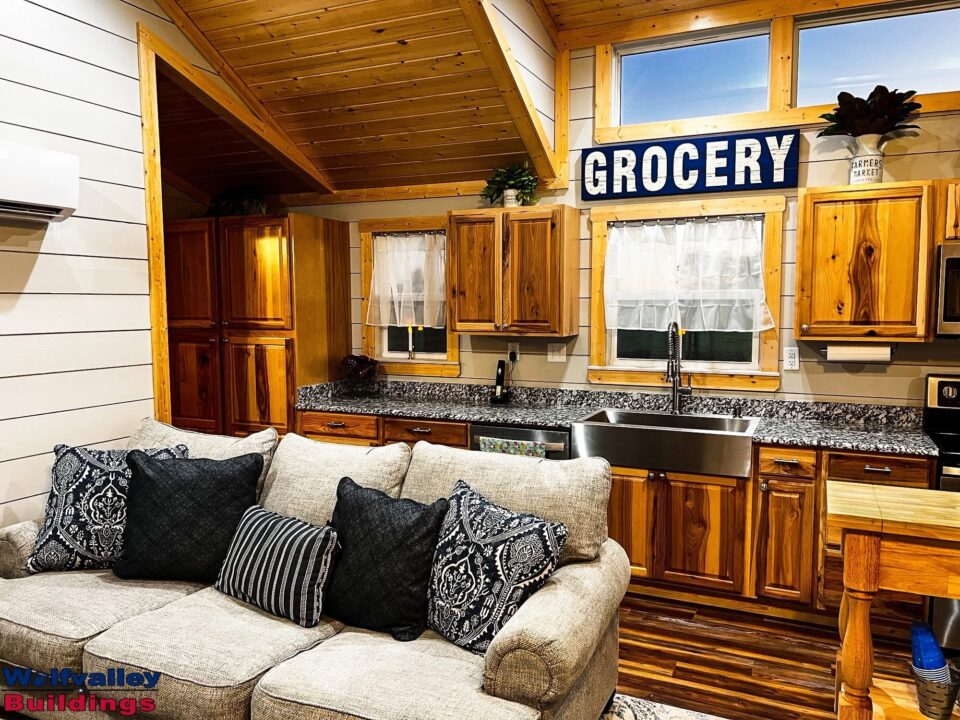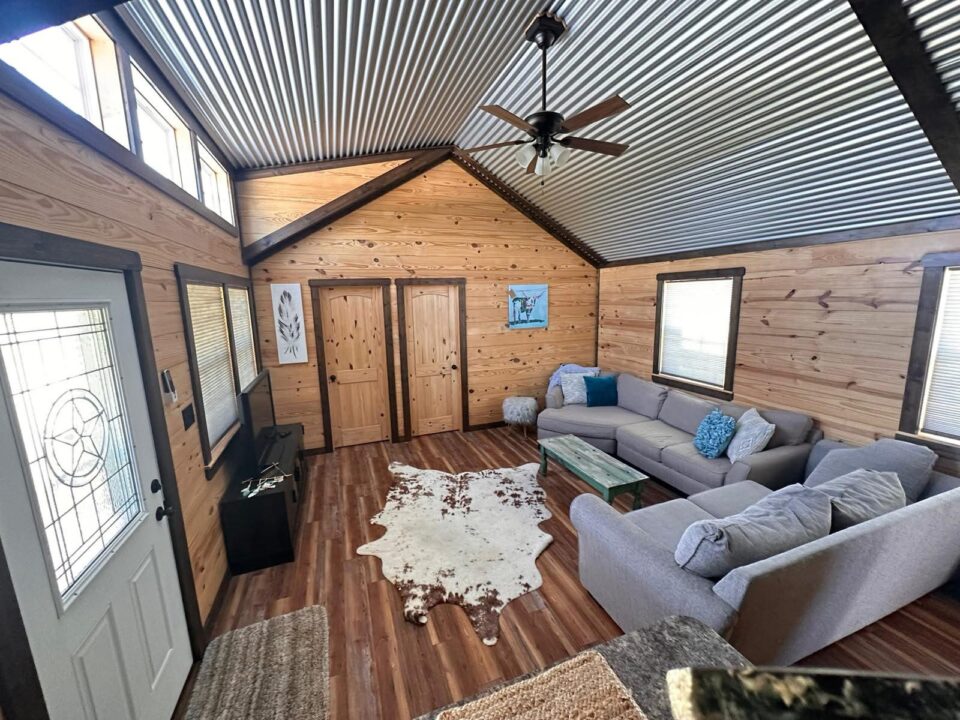
The Certified Cabin Tiny Home: 16×36 of Smart, Stylish Living
August 9, 2025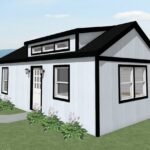
Do Tiny Homes Appreciate? What You Need to Know
August 11, 2025Pier and Beam Tiny Homes: Why the Foundation Matters 🧱🏡
When it comes to tiny homes, most people focus on layout, aesthetics, or energy efficiency. But one detail makes all the difference in how your home functions and holds value: the foundation.
At Wolf Valley Buildings, we build every tiny home on a pier and beam foundation. It’s not just a construction choice—it’s a commitment to stability, comfort, and long-term durability. Whether you’re buying for full-time living, rental income, or guest use, understanding your foundation is key.
In this post, we’ll explain what pier and beam means, why it’s better than other options, and how it gives your tiny home a permanent place to stand.
What Is a Pier and Beam Foundation?
A pier and beam foundation uses vertical supports (piers) anchored into the ground, with horizontal beams on top that hold the weight of the home. This creates a raised floor system, keeping your home off the ground by about 18–24 inches.
It’s one of the most reliable foundation types used for small homes, cabins, and structures built in areas where full concrete slabs aren’t practical or cost-effective. And because it’s above ground, it offers easy access to plumbing, wiring, and utilities 🧰.
At Wolf Valley, every tiny home is constructed this way—because it offers the strongest blend of flexibility and permanence.
Pier and Beam vs. Trailer-Based Tiny Homes
Many people associate tiny homes with wheels. But while mobile tiny homes (THOWs) have their niche, they come with tradeoffs. Most depreciate over time, can’t be easily financed, and are subject to zoning restrictions in many areas.
Our pier and beam tiny homes are permanent structures. They’re not mobile units. They stay put—just like any other home built on a foundation.
This gives you a huge advantage:
-
You can insure and finance your home like traditional real estate.
-
Appraisers and lenders treat your home as real property.
-
You’ll meet most county code requirements more easily.
For buyers who want to live full-time or add value to their land, that’s a major win.
Why Foundation Type Affects Resale and Longevity 💵
The right foundation does more than keep your home off the ground. It also protects your investment.
A properly installed pier and beam system:
-
Helps your home resist ground moisture and flooding
-
Prevents sagging or shifting over time
-
Reduces pest intrusion compared to homes sitting directly on soil
-
Supports consistent indoor temperatures year-round
All of these features contribute to your home’s longevity—and its resale potential.
For buyers asking, “Do tiny homes appreciate?”, foundation is a huge part of the answer. If the home is placed permanently on land and has a quality foundation, the odds of appreciation go up significantly.
Better Comfort Starts Below the Floor 🌡️
One often-overlooked benefit of pier and beam is how it improves your daily comfort.
Because the home sits above ground, you avoid the moisture and mildew issues that often occur with slab foundations or makeshift setups. The extra airflow beneath the house helps regulate temperature and keep the air inside fresh.
It also makes heating and cooling more efficient. Your HVAC system won’t fight as hard, which helps lower your utility bills and reduce wear on appliances.
Want more ideas on keeping your home efficient? Read our guide on energy-saving tiny home designs for more.
Foundation and Land Go Hand in Hand 🌱
When placing your home, site prep is critical. Our team helps make sure your land is level, compacted, and ready for foundation installation. The pier and beam system allows us to adjust easily for minor slopes or uneven terrain, which makes it perfect for rural land in Texas, Oklahoma, or Arkansas.
This flexibility saves you time and money—no need for heavy excavation or large concrete pours. And since we factory-build your tiny home and deliver it ready to go, setup is fast and efficient.
If you’re still looking for the right property, our Land Buying Checklist is a great place to start.
Pier and Beam Supports Code Compliance ✅
Local building codes are often stricter with mobile homes than with fixed foundations. By choosing a pier and beam structure, you’re more likely to pass inspections and stay compliant.
Counties are beginning to allow small-footprint homes as long as they meet permanent dwelling standards. A solid foundation makes that possible.
You may also qualify for traditional financing, depending on how your home is placed and titled. That’s a huge advantage over mobile units, which usually require cash or specialty lending.
Maintenance Made Simple 🧰
One final benefit of pier and beam? It makes home maintenance much easier.
Because the home sits above ground, you can access plumbing, electrical lines, and the underside of the house without tearing into walls or digging up the ground. If a repair is ever needed, it’s faster, cheaper, and less invasive.
For rural landowners, this access is a game-changer—especially in areas where freezing temps or critters can sometimes cause issues.
Our clients often tell us how thankful they are for this feature once they settle in. It keeps stress low and protects long-term value.
The Bottom Line: Foundation Matters 🧱
Your tiny home’s foundation may not be the flashiest feature—but it’s one of the most important. Choosing a pier and beam tiny home means you’re investing in a structure that’s strong, stable, and built to last.
At Wolf Valley Buildings, we’ve built hundreds of pier and beam tiny homes for landowners across the region. From vacation homes to full-time residences, our customers trust these foundations to hold up—and they do.
If you’re ready to place a home on your land, or just exploring your options, talk to our team. We’ll help you choose the right model and ensure your foundation is done right from day one.



